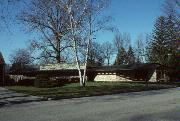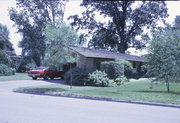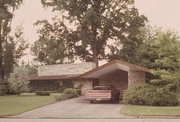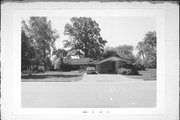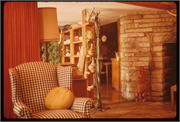Property Record
332 E LINDEN ST
Architecture and History Inventory
| Historic Name: | RICHARD C. SMITH HOUSE |
|---|---|
| Other Name: | |
| Contributing: | |
| Reference Number: | 6821 |
| Location (Address): | 332 E LINDEN ST |
|---|---|
| County: | Jefferson |
| City: | Jefferson |
| Township/Village: | |
| Unincorporated Community: | |
| Town: | |
| Range: | |
| Direction: | |
| Section: | |
| Quarter Section: | |
| Quarter/Quarter Section: |
| Year Built: | 1950 |
|---|---|
| Additions: | |
| Survey Date: | 1974 |
| Historic Use: | house |
| Architectural Style: | Usonian |
| Structural System: | |
| Wall Material: | Limestone |
| Architect: | FRANK LLOYD WRIGHT |
| Other Buildings On Site: | |
| Demolished?: | No |
| Demolished Date: |
| National/State Register Listing Name: | Smith, Richard C., House |
|---|---|
| National Register Listing Date: | 4/19/1979 |
| State Register Listing Date: | 1/1/1989 |
| National Register Multiple Property Name: |
| Additional Information: | A 'site file' exists for this property. It contains additional information such as correspondence, newspaper clippings, or historical information. It is a public record and may be viewed in person at the Wisconsin Historical Society, State Historic Preservation Office. The Smith House illustrates things that owners criticized in houses designed by Wright. Smith found the rooms too small and the temperature too hot or too cold, both due to a failed radiant-heat system and the southern orientation. The roof leaked. Although the plan wrapped around an ancient oak tree, the design’s focus, Wright paved the terrace surrounding the tree, causing it to wither. And the house cost nearly twice as much as the estimate. In many ways, though, this Usonian design expresses Wright’s favorite themes at the end of his career. The one-story building is constructed primarily of Wisconsin limestone, with random stones jutting outward to mimic a natural outcropping. An extremely broad chimney thrusts above the low-pitched hipped roof. On the street elevation, small clerestory slits--like ancient arrow-loops--emphasize privacy for the primary living spaces. Non-load-bearing wooden walls in the interior consist of a three-layer sandwich, with a plywood core between cypress board-and-batten. Wright designed the house on an equilateral parallelogram (or diamond) module using 120- and 60-degree angles. He carried out this motif throughout the structure, piercing the overhanging eaves with diamonds and even designing the drawers of the built-in bedroom cabinets as parallelograms. In the plan for the house, the parallelograms revolve around the old oak tree. Wright’s blueprints indicate that the architect began with an imaginary triangle surrounding the oak and drew all of the grids on the plan around that point. From there, his plan takes the form of a lower-case h, with the axis containing the bedroom wing extending perpendicular to the street and ending in a carport. From the entry (adjacent to the carport), the bottom of the h--containing the “work space” (Wright’s euphemism for the kitchen), the dining area, and the living room--wraps around the rear terrace, thereby turning the actual front of the house--almost entirely glazed--to the garden and golf course at the rear. A final parallelogram forms a pool extending at an angle from the living room. The emphasis on privacy and the natural landscape, the use of design modules that become motifs, and the creation of public and private zones on the interior are all quintessentially Wrightian. |
|---|---|
| Bibliographic References: | Buildings of Wisconsin manuscript. |
| Wisconsin Architecture and History Inventory, State Historic Preservation Office, Wisconsin Historical Society, Madison, Wisconsin |

